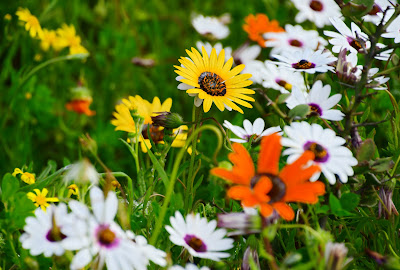West Coast National Park - Flower Season August and September each year - take a picnic and enjoy the amazing display of flowers!
|
|
|
https://www.learntodivetoday.co.za/blog/2019/02/05/visible-shipwrecks-the-barge-margaret/ All that can be seen of this barge today is a
small section remaining. The West Coast National Park is a must visit during flower season. Postberg Reserve within the park is only open to visitors during August and September so it can get very busy. Best to visit on a sunny week-day rather than a week-end when the Capetonians drive up to see the flowers and enjoy a picnic in amongst huge boulders, wild flowers, seagulls looking for a snack and the sea.
For hikers, the trail during Flower Season is a must do - booking is
essential. See the Blog below for full details. https://www.ostrichtrails.com/africa/south-africa/postberg-flower-hike/ Kraalbaai in the West Coast National Park offers stunning views over Langebaan Lagoon and the tidal flats are ideal for walking during low tide. During summer swimming, kayaking, SUP or wind-surfing can all be enjoyed. Their are also house boats for hire - spend a romantic night on the lagoon or have a party (not too noisy!) on the bigger house boat that sleeps around 24 pax. The West Coast National Park surrounds the beautiful Langebaan Lagoon and is a Ramsar Site (Wetland of Internationa Importance) Migrant waders from the Northern hemisphere can be seen here as well as Greater and Lesser Flamingoes. There are bird hides close to the Geelbek Information centre and another one just before the exit gate on the Langebaan side. This hide has been recently upgraded and is now much higher, allowing birds to be seen more easily. The views from Seeberg Lookout are beautiful and there is also the hike from the Langebaan gate to Seeberg - approx 4km. We walked a short distance along this hiking path and it was fascinating to watch a "flower eating" bird having a whale of a time amongst the beautiful wild flowers! Whether the flowers are edible for humans I cannot say! A West Coast iconic "must see" is Bokkom Laan in Veldrif. Take time out to sit over the water at "Ek en DJY" - they serve toasties, burgers, fish and the beer is cold! We loved watching a Grey Heron trying to find a fish in the shallow waters but he had no luck while we were watching. We got chatting to a local who has re-located to the peace of Velddrif from Gauteng. His photos of the heron are incredible, showing that fish are indeed caught from time to time. There are boat trips on offer for a closer look at the birds - our time did not permit for this, sadly. The local industry here is bokkoms, dried out by the sun and the wind. "Fish Biltong" and there is a huge warehouse full of this South African delicacy. Eat them as biltong, or on buttered toast, use to make fish soup or re-hydrate to use as anchovies. For Accommodation Cape Town, South Africa The bird that just loved eating the wild flowers - such fun to watch!
|








